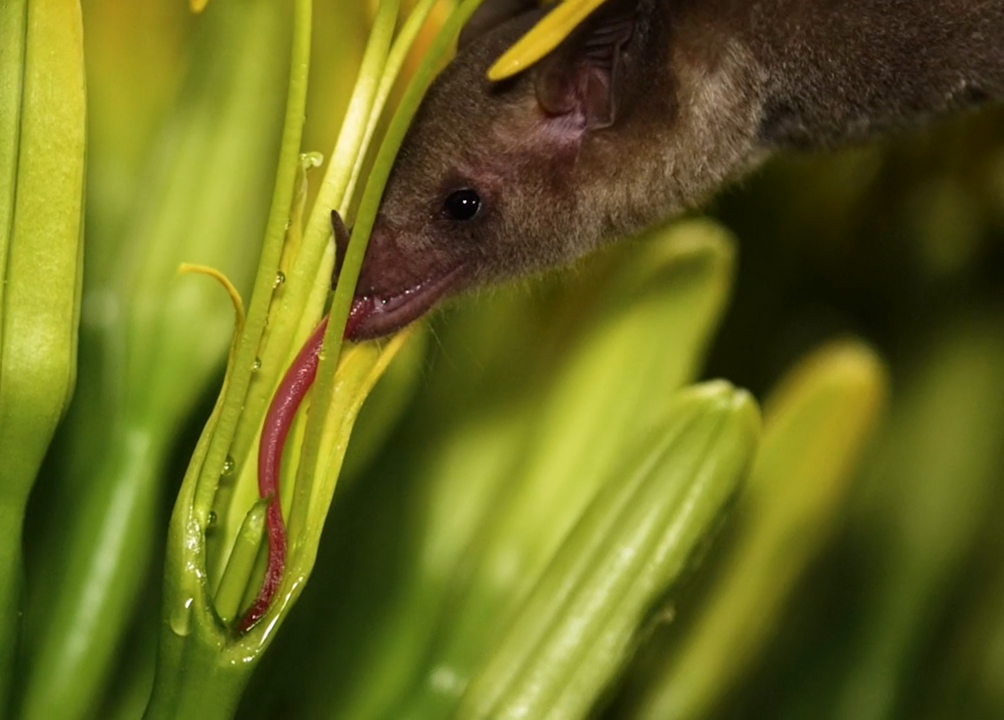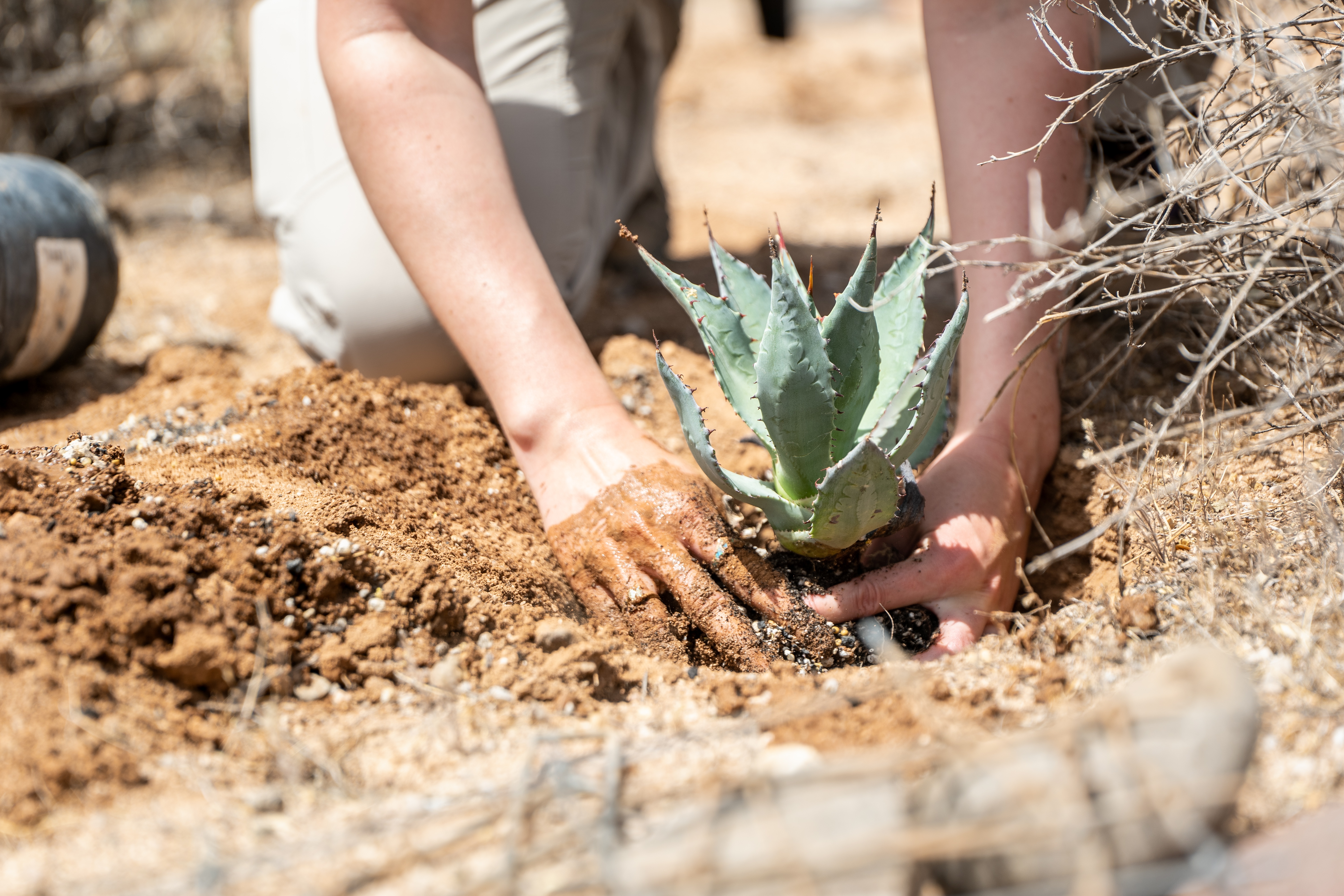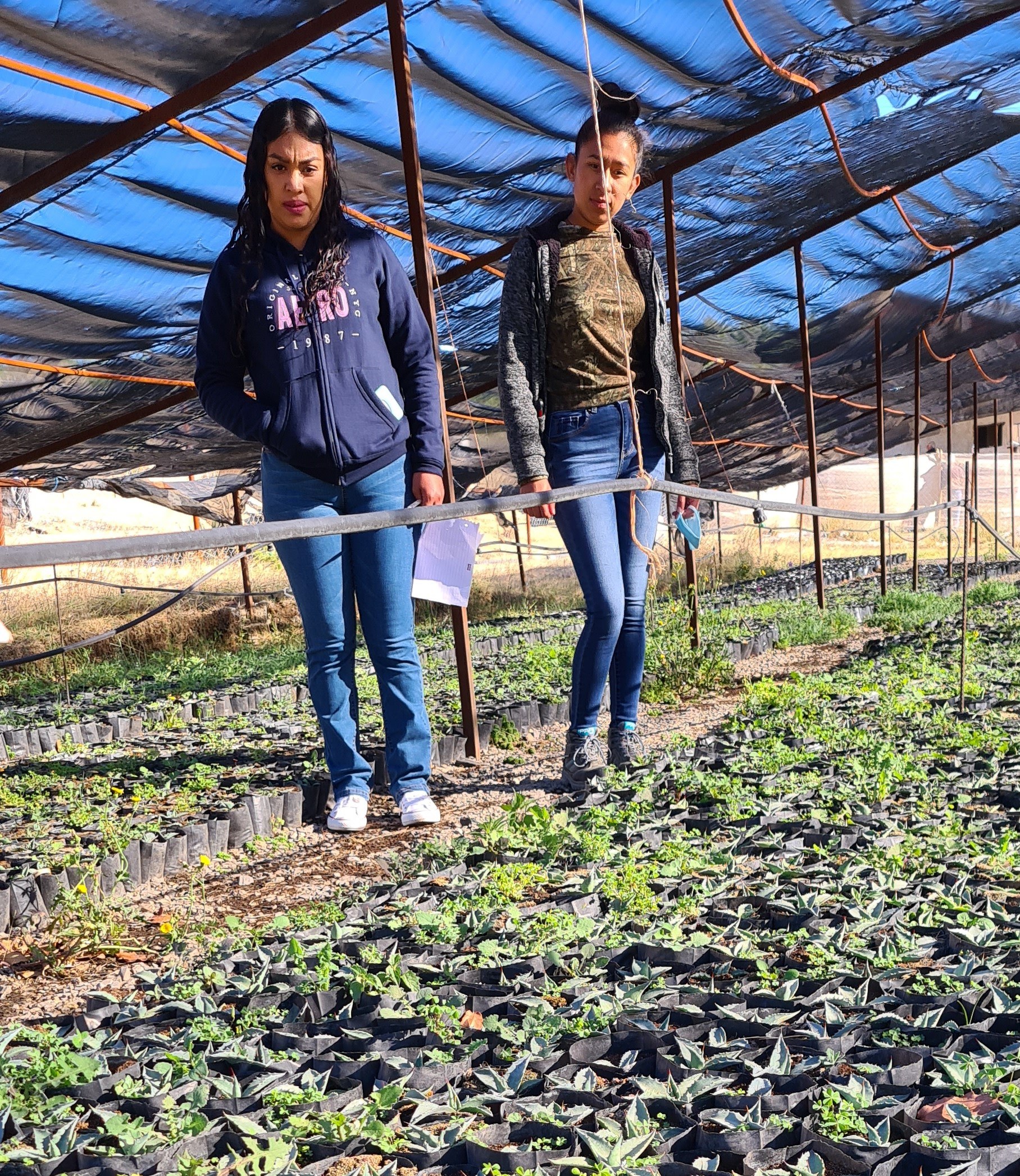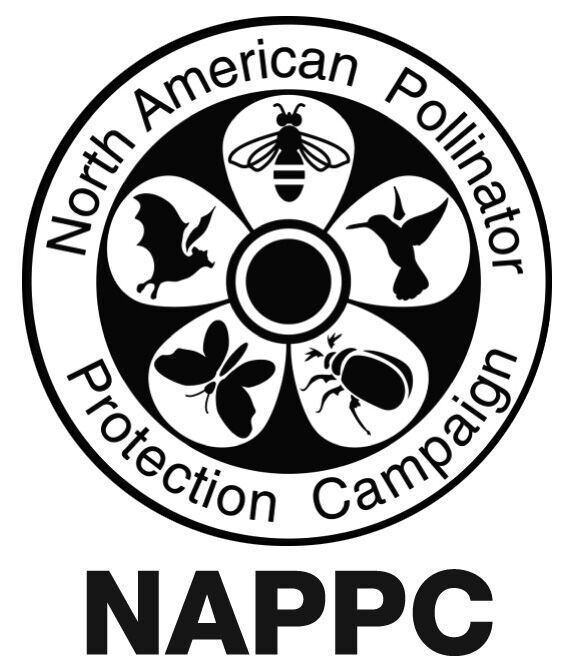Dr. Kristen Lear, Agave Restoration Initiative of Bat Conservation International
Food, spices, oils, and fibers – pollinators excel at making these items possible. The complexity of the pollinator world is astounding because of the roles they play and their vitality to healthy ecosystems. We celebrate these achievements through the incredible people and projects that are working to conserve pollinators. We hope these stories encourage and empower you to better understand who our pollinators are and what actions you can take to help them. This month we interviewed Dr. Kristen Lear about agave restoration with Bat Conservation International.
Q: How would you describe the Agave Restoration Initiative of Bat Conservation International?
A: Bat Conservation International’s Agave Restoration Initiative, is a bi-national collaboration of diverse partners, works across the Southwest U.S. and Mexico to save threatened and endangered pollinating bats, restore agave corridors, and support communities in sustainable agricultural and business practices. Our goal is to recover thriving populations of three species of nectar-feeding bats, including the endangered Mexican long-nosed bat, that are critical pollinators of agave plants and promote lasting economic opportunities for rural communities and landowners. By 2030, we plan to plant 500,000 native agaves; restore and protect 95,000 hectares of land; and support 50 rural communities. This ambitious effort represents a new model for establishing supply chains of regionally appropriate native plants for large landscape-scale restoration and catalyzing collective action for conservation of long-distance migratory species.
Mexican long-nosed bats are pollinators that rely on native agave flower nectar. Photo Credit: Horizonline Pictures, Bat Conservation International

Q: How did this initiative start?
A: In 2018, Bat Conservation International launched the Agave Restoration Initiative to recover thriving populations of the Mexican long-nosed bat by restoring the bi-national nectar corridor. The Initiative implements nature-based solutions at the intersection of conservation, regenerative agriculture and ranching, land restoration, and sustainable development, benefiting bats and people. The first few years of the Initiative focused on piloting localized agave restoration and community-based projects focused on sustainable agriculture and ranching to support agave habitat for bats and people. These pilot projects allowed us to establish relationships with local conservation actors in each region where we’re working and to establish proof-of-concept for restoration in diverse geographic areas with diverse partners. Importantly, these pilot projects have demonstrated tangible, on-the-ground socio-ecological impact and benefit, including enhancement of native vegetation ground cover, soil erosion reduction, and economic benefit to community members. These tangible results have helped attract interest from new communities and landowners interested in joining the initiative and implementing restoration actions on their lands and have catalyzed investment from funders and interest in this work from the general public.
Q: What got you interested in or inspires you about pollinators?
A: To me, pollinating bats are some of the most fascinating animals. They play such critical roles in maintaining healthy plant populations, healthy ecosystems, and healthy agricultural systems. However, they are often overlooked in pollinator conversation. Because bats do their pollination work at night, people don’t often get the firsthand experiences with pollinating bats as they do with daytime pollinators such as bees, butterflies, and hummingbirds. That’s one of the things that inspires me the most in my work: bringing to light the importance of these nocturnal pollinators and helping people see just how neat they are!
Q: Where is most of your work taking place?
A: Through the Agave Restoration Initiative, we are currently working in Arizona, New Mexico, and Texas in the U.S. and Chihuahua, Coahuila, Nuevo León, San Luis Potosí, Sonora, and Zacatecas in Mexico. We prioritize our work in areas within 50 km of known nectar bat roosts (50 km is a typical nightly foraging distance of these pollinating bats) and along the bats’ migratory corridors.
Bat Conservation International’s Agave Restoration Initiative has planted more than 115,000 native agave plants across southwest United States and northeast Mexico. Photo Credit: Horizonline Pictures, Bat Conservation International

Q: What successes have you achieved?
A: Our on-the-ground restoration and conservation strategies are working to create climate-resilient nectar corridors and reduce societal impacts on natural ecosystems. To date with our partners, we have:
planted over 115,000 native agaves;
protected or restored 5,495 hectares of land;
built or renovated 26 community and private nurseries for production of native agave plants for restoration efforts as well as vegetables and medicinal plants for community consumption and business enterprises;
collected more than 1 million native agave seeds for restoration efforts and regional seed banks;
trained 183 community members in sustainable agricultural and ranching techniques;
created 255 employment opportunities through restoration activities;
supported 12 ejidal and private green businesses, including 7 women-owned businesses;
engaged 130 community members and landowners in “exchanges of experience” to foster skill and knowledge sharing;
reached more than 1.5 million people locally and worldwide through educational programming about bats and agaves;
produced 2 Spanish children’s books highlighting bat and agave conservation;
and launched 3 regional agave restoration networks to guide restoration actions.
This work contributes to 15 of the 17 United Nation Sustainable Development Goals.
Community-based agave plant nurseries are restorating native habitat for pollinating bats. Photo Credit: Nahum Sanchez

Q: What is your biggest challenge?
A: Because of the long-distance migratory nature of the initiative’s focal bat species, we must think big and implement conservation action at a landscape scale, restoring and connecting roosts and migratory corridors. However, a core challenge facing many landscape-scale conservation efforts is that local projects often develop in isolation, never coalescing into a wider movement and never having the opportunity to learn from each other.
Because of the large spatial and temporal scales of the challenge of conserving long-distance migratory species that cross international borders, we recognized the importance of coordinated vision and action to avoid duplication of efforts and strengthen the impact of on-the-ground action. One aspect of the Agave Restoration Initiative is the development of robust, regional conservation action networks to guide regionally appropriate work in each area. These networks have allowed the development of ambitious goals that would not be achievable through isolated projects. We have found that this network approach also better enables participation of diverse voices, facilitates collaborative co-creation of goals and workplans, and facilitates peer-to-peer learning opportunities and exchanges of knowledge that boost the success of our conservation and restoration work.
Q: How do you engage with your community regarding agave restoration?
A: We have made a point to build diverse, multi-sectoral partnerships. We have brought together bat and agave experts and local interests from environmental and education non-profits, rural communities, and industry, allowing us to co-develop priority conservation, restoration, and research actions. Currently, the initiative brings together more than 65 partners including civil society organizations, local communities, government agencies, private industry, schools and universities, and public interest groups. Together, we work to build local capacity for sustainable land management practices and sustainable rural economies through collaborative project development, technical training, and peer-to-peer learning opportunities, ultimately catalyzing community and institutional empowerment for conservation and restoration across a large bi-national landscape.
Q: What is something about pollinator conservation or your project/organization you wish more people knew?
A: I wish more people knew about the importance of bats for pollination! Bat pollinators often don’t get the recognition they deserve. Nectar-feeding bats often spread more pollen than insect pollinators or hummingbirds, and often spread this pollen over much farther distances, making them some of the most effective pollinators of more than 300 plants worldwide, including agaves. By protecting pollinating bats like the Mexican long-nosed bat, we’re protecting these important plants.
Q: What is the best way to get involved in your conservation work?
A: Check out our Agave Restoration Initiative webpage and our main Bat Conservation International website to learn more about our work. Consider becoming a member or donating to support bat conservation, research, and education around the world. Also, visit the bat swag shop with lots of fun batty merchandise with all proceeds supporting our programs.

Alone no individual or entity can address all pollinator conservation needs, but through collaborative conservation we can and will make a difference for pollinators and the ecosystems they help support. Keep following our Pollinator Conservation Spotlight series to hear more inspiring pollinator conservation stories. Do you know a great project or organization that is addressing critical pollinator conservation topics and deserve their moment under the spotlight? Let us know!
Article contributed by Mara Koenig, U.S. Fish and Wildlife Service, for the NAPPC Pollinator Communications Taskforce's Pollinator Conservation Spotlight Series.
